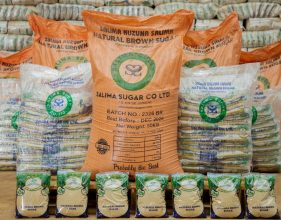Malawi kwacha in steep depreciation
After a few months of stability, the kwacha has found itself in another steep depreciation, with some foreign exchange bureaus selling the greenback at K530 as of Wednesday this week.
The last time the local unit sharply lost its value against the dollar was in November last year when it hit K520 in some authorised dealer banks (ADBs).
But this time, the depreciation of the kwacha comes at the height of the tobacco sales which have already raked in $204.38 million ($102.2 billion) in 13 weeks of sales, up from $183.45 million during the same period last year.

official reserves
The weakening of the currency is also in sharp contrast to the high levels of foreign currency the economy is sitting on, cumulatively at $1 billion ($500 billion) as at July 13 2015. This is a combination of gross official reserves, held in the custody of the Reserve Bank of Malawi (RBM) to prop up the kwacha, estimated at $724.29 million, or 3.47 months of import cover, and private sector reserves in commercial banks at $292.4 million, or 1.4 months of import cover.
Published daily foreign exchange bureaus rates by RBM dated July 14 2015 show that most bureaus were selling a dollar far between K500 ($1) and K530 while as of yesterday most ADBs were officially selling a dollar at around K470.
For instance, Lilongwe-based Golden Foreign Exchange Bureau was buying a dollar at K485 and sold the same at K530 while Midland Forex Bureau was selling a dollar at K525 and bought the same at K485.
But spot checks on black market or in the streets of Lilongwe yesterday showed that dealers were selling a dollar at K525 and bought the same at a range of between K505 and K510.
Said one dealer: “Our currency [the kwacha] has weakened significantly against the dollar more especially beginning July. In June, the situation was different as our buying rate of a dollar was at K480 and we are selling it at K500.”

shown in this graph
However, economic expert Gilbert Kachamba on Wednesday feared that things will be tougher ahead for most Malawians, due to the weakening of the currency as importers and traders pass on the high cost of imports to consumers.
RBM spokesperson Mbane Ngwira on Wednesday dismissed the puzzle linking the prevailing depreciation of the kwacha to foreign exchange generated from tobacco sales.
“We have been saying this for some time that tobacco only gives the economy foreign exchange worth less than two months of import cover and tobacco in itself only triggers that psychological effect to Malawians,” said Ngwira.
Financial market sources alleged yesterday that some ADBs are hoarding foreign exchange thereby creating artificial scarcity of the foreign currency.
In its latest monthly economic review for April 2015, RBM said the depreciation of the kwacha despite tobacco sales could be attributed to “speculative behaviour of commercial banks in attempt to rebuild own reserves”.





